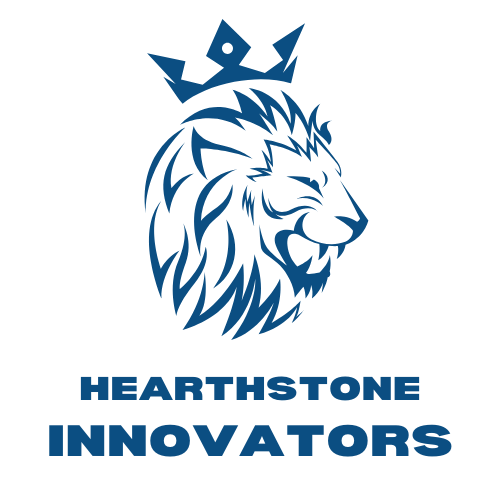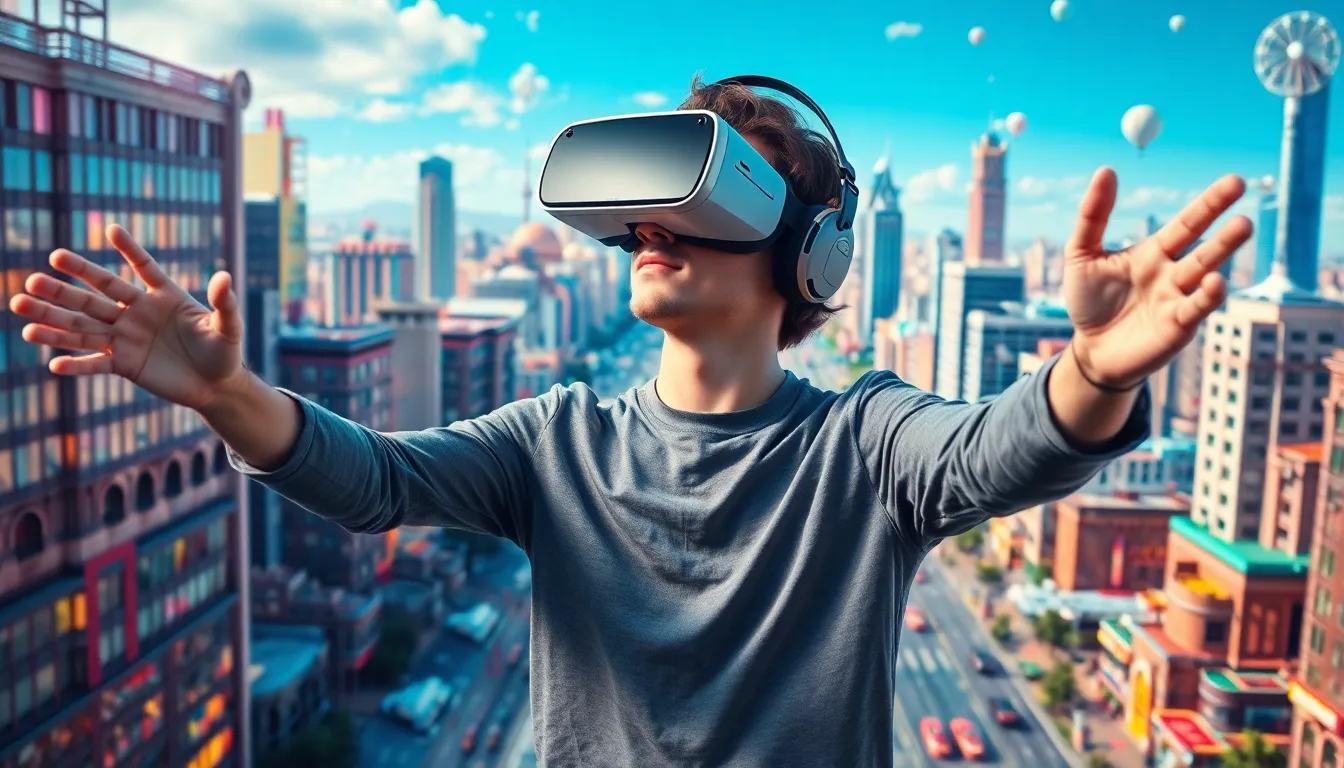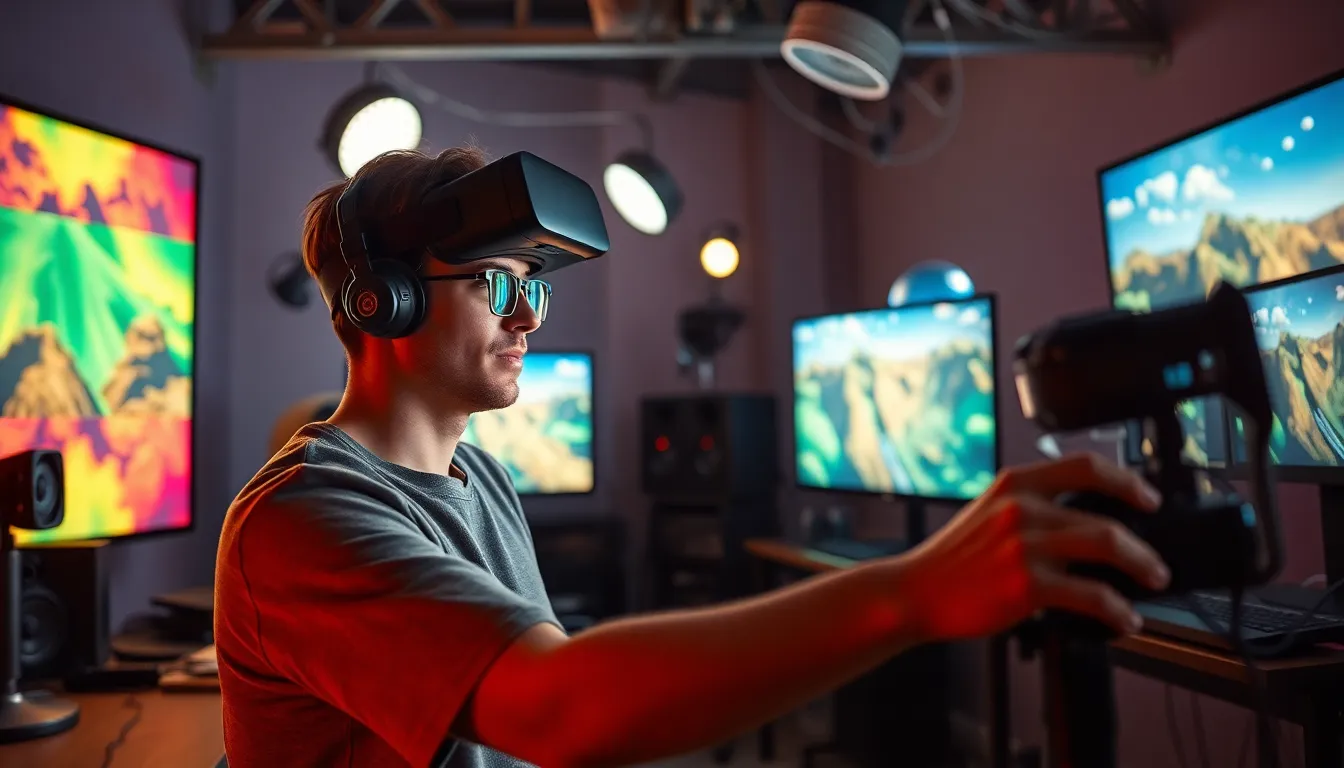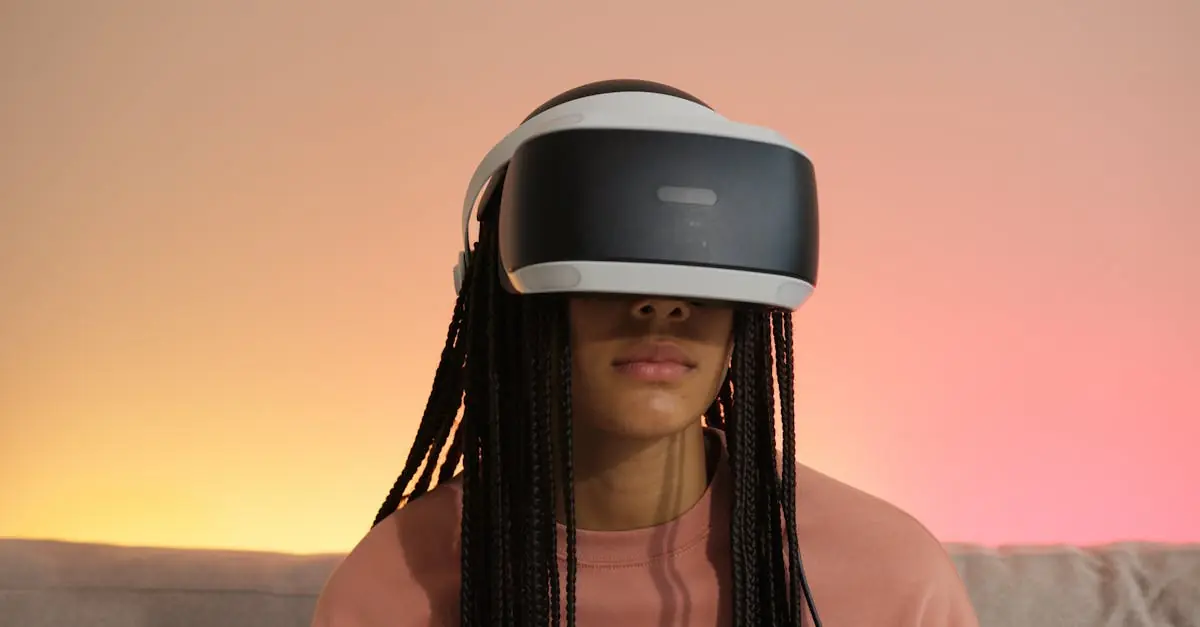Imagine stepping into a world where maps come to life, and navigating your way through cities feels like a scene straight out of a sci-fi movie. With VR map interaction, that dream is now a reality. Gone are the days of squinting at paper maps or endlessly scrolling on tiny screens. Instead, users can immerse themselves in a 3D environment, exploring every nook and cranny with just a flick of their wrist.
Table of Contents
ToggleOverview of VR Map Interaction
VR map interaction redefines navigation by creating immersive experiences. Users can seamlessly explore environments in a three-dimensional space.
Definition and Importance
VR map interaction refers to the use of virtual reality technology to navigate and interact with digital maps. This technology offers an engaging alternative to traditional mapping methods. Immersive experiences enable users to visualize locations and routes more effectively. Enhanced spatial awareness occurs as users engage with realistic representations of their surroundings. Importance lies in its potential to improve user experience, making navigation easier and more intuitive. The use of VR allows for interactive elements, enabling users to gather information about landmarks and points of interest quickly.
Applications in Various Fields
Various fields utilize VR map interaction to enhance functionality. In urban planning, professionals visualize projects through lifelike simulations. City planners access virtual environments to analyze spatial relationships and make informed decisions. Education benefits from this technology by providing students with interactive geography lessons. Students can explore different terrains and cultures through virtual field trips. Additionally, real estate agents showcase properties, allowing potential buyers to experience homes from any location. Tourism also leverages VR maps, giving travelers a preview of destinations before visiting.
Technologies Behind VR Map Interaction
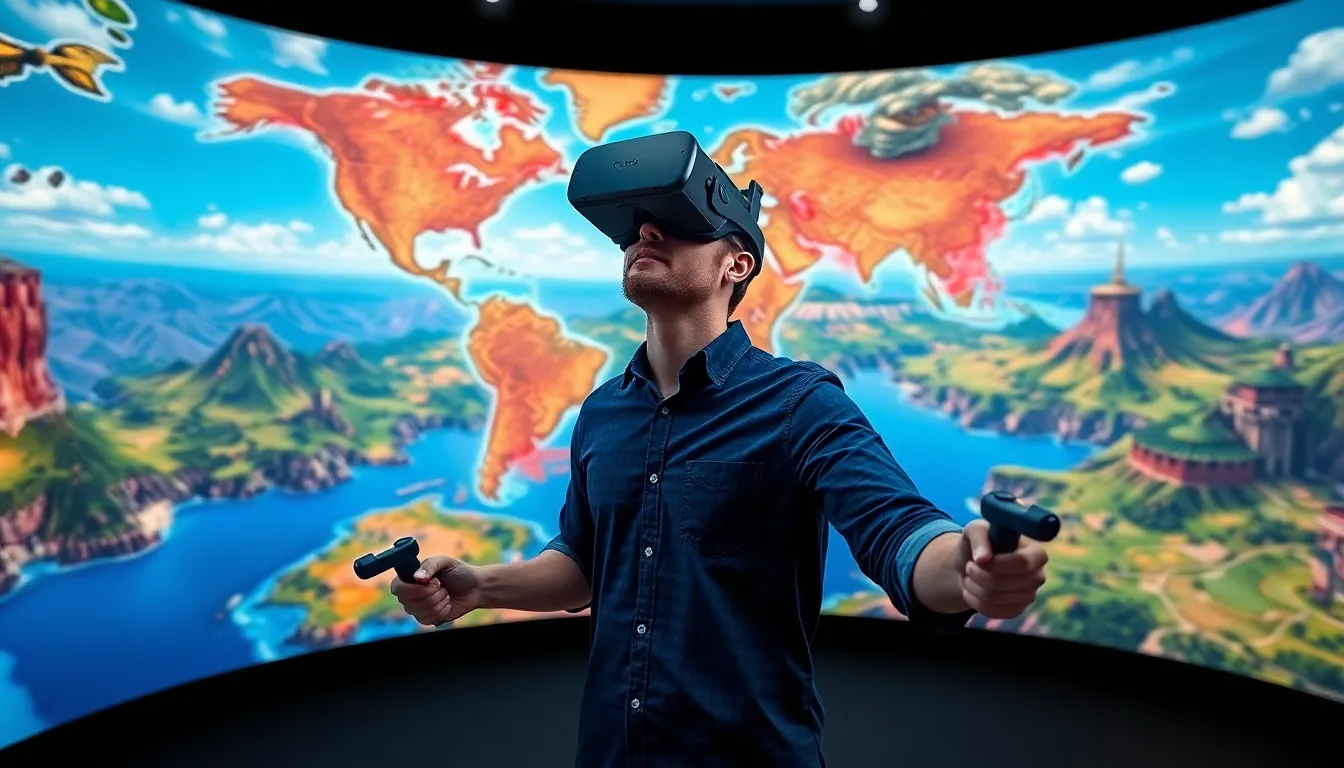
VR map interaction relies on various technologies to create an immersive navigation experience. Users access detailed 3D environments through advanced hardware and software, enriching the digital map experience.
Hardware Requirements
Essential hardware includes VR headsets and motion controllers. Popular choices are the Oculus Quest and HTC Vive, known for their high-quality visuals and responsiveness. High-performance computers provide the necessary processing power to render complex virtual environments. Additional peripherals such as haptic feedback devices enhance the user’s tactile experience, creating a more realistic interaction with the virtual space. These components, when combined, enable a seamless and engaging navigation experience.
Software and Development Platforms
Multiple software platforms facilitate the creation and integration of VR map interactions. Unity and Unreal Engine stand out for their robust capabilities in developing immersive experiences. These platforms provide tools for real-time rendering and interactive content creation. Applications often utilize Geographic Information System (GIS) data to enable accurate representation of various terrains and landmarks. Developers leverage software development kits (SDKs) tailored for VR, streamlining the integration of virtual elements into the mapping experience.
User Experience in VR Map Interaction
User experience in VR map interaction significantly enhances navigation. Immersive environments create intuitive exploration, making the digital mapping experience engaging.
Design Principles
Effective design principles prioritize simplicity and clarity. User interfaces should feature straightforward navigation controls, allowing easy access to various functions. Visual hierarchy directs attention to essential elements, ensuring users can quickly find relevant information. Interaction cues guide users throughout the virtual space, facilitating seamless movement between different areas. Color contrasts play a critical role in enhancing visibility, emphasizing important landmarks or features while maintaining an aesthetically pleasing environment. Consistent design language across elements contributes to a cohesive experience, helping users feel comfortable and confident in their interactions.
User Engagement Strategies
Engagement strategies aim to captivate users and enhance their experience. Interactive elements, such as clickable hotspots, provide information about nearby landmarks, improving knowledge retention. Gamification techniques offer incentives for exploration, making navigation feel like an adventure. Users benefit from collaborative features that enable shared experiences among friends or colleagues. Regular updates through fresh content and changing scenarios encourage repeated interactions, sustaining user interest. Feedback mechanisms empower users to voice their opinions or report issues, fostering a community focused on enhancing the VR map experience.
Case Studies of Successful VR Map Interaction
Several case studies illustrate the effectiveness of VR map interaction across various domains.
Case Study 1: Environmental Modeling
Environmental modeling experts leverage VR map interaction to visualize ecological data. One key example focuses on tracking deforestation in the Amazon rainforest. Researchers use VR environments to simulate changes over time, allowing for real-time exploration of affected areas. Users engage with data through interactive elements, gaining insights into biodiversity loss and habitat destruction. This immersive experience fosters a deeper understanding of environmental issues, making the information accessible and engaging. Enhanced spatial awareness helps stakeholders make informed decisions regarding conservation efforts.
Case Study 2: Urban Planning
Urban planners utilize VR map interaction to revolutionize the design and development of cities. In one prominent project, planners created interactive visualizations of proposed infrastructure changes in Chicago. Public stakeholders actively participated by navigating 3D models of the city, enabling them to observe alterations firsthand. Planners received valuable feedback as users indicated preferred designs and potential concerns. Moreover, this approach streamlined collaboration amongst developers, architects, and community members. The immersive experience highlights the benefits of transparency and inclusivity in urban development initiatives.
Future Trends and Developments
VR map interaction is rapidly evolving, integrating advanced technologies and user-centric designs. Innovations are increasing the effectiveness of immersive navigation experiences across various sectors.
Innovations in VR Map Interaction
Emerging technologies are enhancing VR map interaction capabilities. Artificial intelligence algorithms improve navigation by offering personalized suggestions based on user behavior. Integrating augmented reality features creates hybrid experiences, allowing real-world elements to enhance the virtual landscape. Collaborative platforms enable multiple users to explore maps together, improving engagement and interaction. Cross-platform compatibility is growing, allowing diverse devices to seamlessly connect and interact within the same virtual environment. These advancements increase accessibility and broaden the user base, making VR map interaction more inclusive.
Predictions for the Next Decade
The next decade will likely see significant advancements in VR map interaction. Expect improved hardware with lighter, more powerful headsets delivering richer experiences. Enhanced spatial audio technologies will create realistic soundscapes, further immersing users in their environments. The use of real-time data integration will enable dynamic updates to maps, reflecting current conditions and events. Advances in haptic feedback will provide tactile sensations, making interactions even more intuitive. More industries will likely adopt this technology for training, tourism, and education, expanding its reach and impact on everyday life.
VR map interaction is revolutionizing how individuals navigate and experience their surroundings. By merging cutting-edge technology with intuitive design, it offers a compelling alternative to traditional mapping methods. The ability to engage with 3D environments enhances not only spatial awareness but also the overall user experience across various fields.
As advancements continue to unfold, the potential for VR map interaction is boundless. Future innovations promise to make these experiences even more immersive and accessible. This technology stands to reshape urban planning education tourism and beyond, creating a more connected and informed society. Embracing VR map interaction could soon become an essential part of everyday life.
